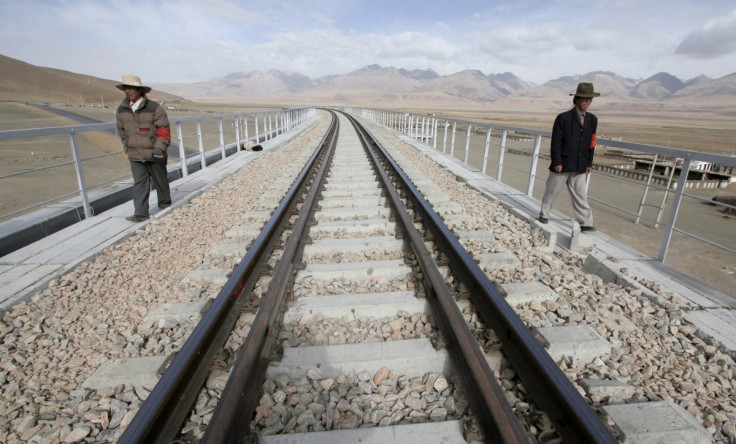China Opens Controversial $2bn Railway Line to Tibet Holy Site

China has launched a new $2bn (£1.2bn) extension of its railway line into Tibet, according to Chinese state media.
The additional line will run from the Tibetan capital Lhasa to the key Buddhist site of Shigatse.
The disputed territory is controlled by China and is highly sensitive because of its strategic location, bordering India, Nepal and Myanmar.
The railway, which first opened in 2006, has sparked protests amid claims that its construction caused an influx of long-term Han Chinese migrants to Tibet.
Exiled Tibetans and human rights groups have accused Beijing of threatening their culture, which is steeped in Buddhist tradition.
The newly-opened Lhasa-Shigatse extension cost some 13.28bn yuan ($2.2bn) in total and will reduce journey times from the Tibetan capital by as much as two hours, according to Xinhua news agency.
The cost of 50,000 yuan per meter makes it the most expensive railway line ever built in China, the agency added. The first passenger service is set to leave Lhasa on Saturday.
Further Extensions
Reports in Chinese newspapers in July suggested that Beijing was planning to further extend the railway line from Shigatse to the borders of India, Bhutan and Nepal.
The planned extension would take place between 2016 and 2020 to two destinations, one reaching the Nepalese border and one reaching the border with India and Bhutan.
China's communist army occupied Tibet in 1950. Tibet's spiritual leader, the Dalai Lama, fled to India in 1959. Tens of thousands of Tibetans also fled to India at the time, forming communities that continue to live in exile.
© Copyright IBTimes 2025. All rights reserved.






















